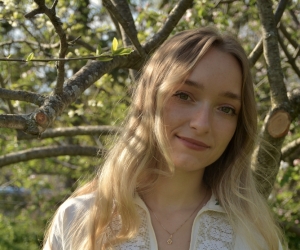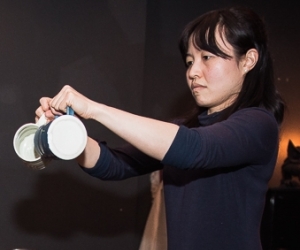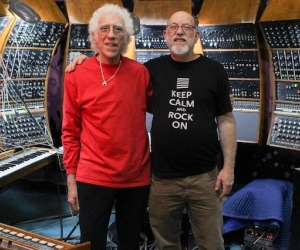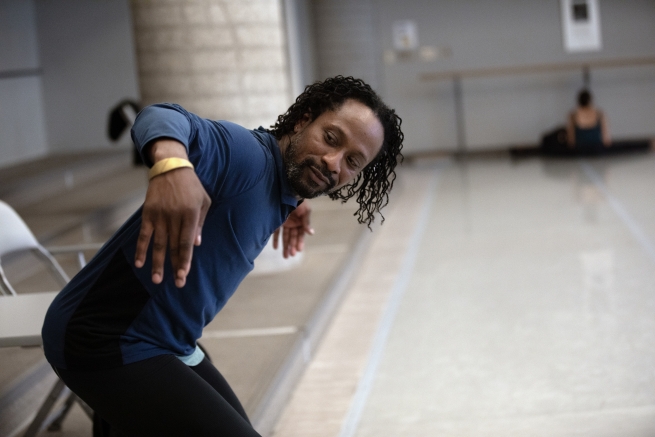
In most cultures there has always been a synergetic interplay between music and dance—one informing and amplifying the other. Music exemplifies the physicality and rhythmicity that exists in a dancing body. The synergy of dance and music is a repertoire of invitations to the spaces in between—where syncopation meets breath and elicits feeling, and where creativity is sparked through language and conversation.
We animate the ancestors, speaking a language through bodies that grounds these dialects of patois and Kreyol in the music and dance in a metred and unmetred way.
As a choreographer, I, Kevin, believe that dance and music should not correspond perfectly all the time. It is a living language, and the dissonance fascinates me. The contrapuntal juxtaposition of music and dance is where I balance and find inspiration. At this dynamic intersection of culture, language, and conversation Trase Pa came to life.
Yanvalou, Merengue, Nago, and Petro are rhythms danced in the Afro-Haitian tradition. They constitute the four movements of Traces, David Bontemps’s suite for cellos, double bass, and percussion, composed in 2016. I chose Traces—which will be recorded under David Briskin, music director and principal conductor of the National Ballet of Canada—for my creation Trase Pa.
David recalls that Traces started through conversations with the Haitian dancer-choreographer Sibyl Graham about the urgency of preserving and sharing their cultural heritage. They deplored the fact that the immense repertoire of traditional dances of Haiti, their country of origin, is generally devalued and underrepresented.
When I was invited to choreograph for the National Ballet of Canada, pianist Sean Sutherland referred me to composer David Bontemps (photo below). In hearing Traces, it became apparent that I would choose his music, as I perceived in it the dialogue of my Jamaican culture and that of Yoruba, Kongo, Haiti, and Europe.
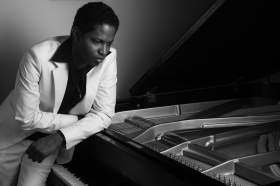
David explains, “I decided to write a work that would resonate at the heart of the natives of Haiti and simultaneously touch the soul of those who are not. With regard to my heritage, my role as a creator is to stylize its idioms, and, in so, doing, to shape my own artistic vision.” I appreciated the composition’s similarity to the creative practice explored in my choreography. It questioned form, content, and musicality. I was seduced by the aural sensibilities of the composition, by its defying instrumentation within the classical structure, and by the rhythmic omnipresence.
Working with a creation based on such astute complexity, I did not have the privilege of sitting with the music, yet I knew I wanted to honour the cultural impetus that sparked David’s composition. Akin to the traditional music structures, I noted the ways he envisioned movement occurring throughout the sections.
David’s approach was, as he describes, “to build a structure in the form of verses-choruses on the canvas of rhythmic patterns commanding the movements of the body. Imagining the dances has instilled a perpetually changing geometry in the work: all the cellos share the lead democratically. These rhythms-steps-movements also imprinted their historic-philosophical and emotional loads: sadness, pride, hope, conviction, combativeness.”
With the amalgam of notes from our conversations, I entered the studio, shaping the kinetic structure on traditional Haitian dances, abstracting them into movement investigation, and molding a choreographic structure. This gave rise to Trase Pa—meaning fine dancing as well as the footprints we draw in Haitian Kreyol. At the core of this union of music and dance are pathways, recognition, and honouring with reverence.
Like Traces, David’s piano composition Ankh illustrates this approach. He explains, “the incessant arpeggios impose the Vodou rhythm of the Yanvalou, reinforced by the polyrhythms of the melody, with a brief percussive passage as a bridge, pushing the emotion to the climax. “
Trase Pa is a creative stave on which choreographer, composer, and cultural histories navigate spaces through connectivity and syncopations. Both synergies are still in development and will live in the breath of innovative potential between choreographer, composer, musicians, and National Ballet of Canada dancers Tanya Howard, Ben Rudisin, and Teagan Richman-Taylor.
Tracing tempi where emotions, sounds, and movements unify the title of the work: this heritage traces through us . . . to all hearts.
FYI: Kevin A. Ormsby is currently working on a solo performance “Trilogy of Being,” which celebrates forty-two years in the arts and thirty-five years in dance, and is choreographed by American and Canadian choreographers. In 2020, David Bontemps wrote La Flambeau, an opera based on the 2014 drama by Haitian playwright Faubert Bolivar.
IMPORTANT NOTE: This is article is coauthored by Kevin A. Ormsby and David Bontemps. This authorship is reflected in the byline of the print and digital editions, but cannot by accomodated by Musicworks' outdated website. DAVID BONTEMPS is a Montreal-based pianist and composer. He studied music in Port-au-Prince with Serge Villedrouin and successfully participated in Caribbean piano competitions. In 2011, he obtained Conseil des Arts et des Lettres du Québec and Canada Council for the Arts grants to produce the album Vibrations, which was followed by Gede Nibo in 2017.
Top photo of Kevin A. Ormsby rehearsing Trase Pa by Karolina Kuras, courtesy of the National Ballet of Canada.
